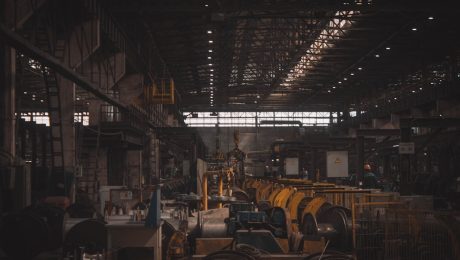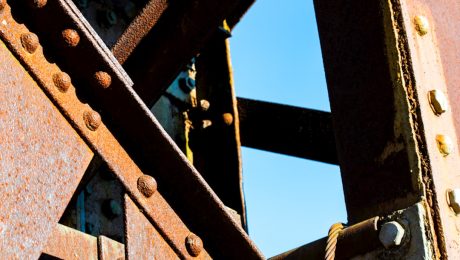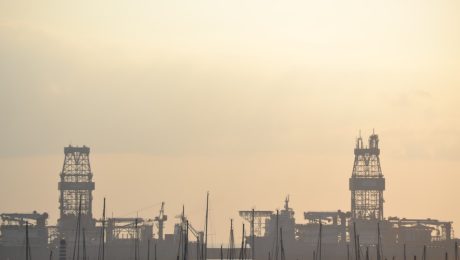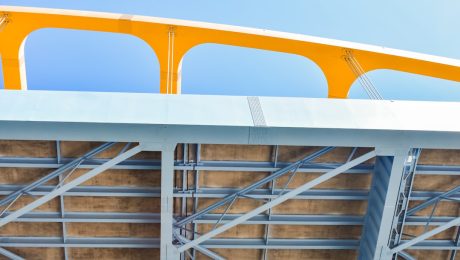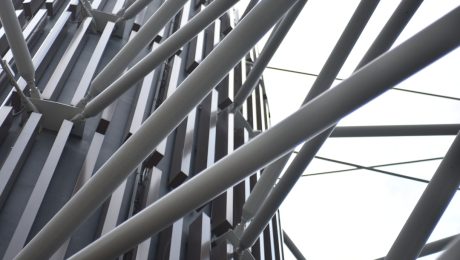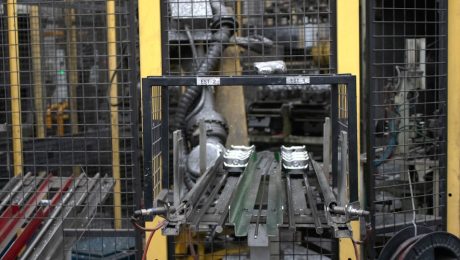Working with pipes, whether in industrial settings, construction projects, or DIY endeavors, often requires precise bending and straightening. Achieving the desired shape and maintaining structural integrity are crucial for functionality and safety. This comprehensive guide delves into the various methods, tools, and considerations involved in mastering this essential skill.
Understanding Pipe Materials and Their Impact on Bending
The material of the pipe significantly influences the bending process. Different materials exhibit varying degrees of ductility and malleability, affecting the techniques and tools required. Steel pipes, for instance, require more force and specialized equipment compared to more flexible materials like copper or PVC. Steel pipes, especially those with thicker walls, are prone to cracking or kinking if bent improperly. This necessitates the use of techniques that minimize stress concentrations, such as using bending shoes or mandrels. Copper pipes, on the other hand, are more forgiving and can often be bent by hand, albeit with careful attention to avoid creases. PVC pipes, being inherently brittle, require specific bending techniques and tools to prevent breakage. Understanding the specific properties of the pipe material is the first step towards successful bending.
Choosing the Right Pipe Bending Tools and Equipment
The selection of tools depends largely on the pipe material, diameter, and desired bend radius. For smaller diameter pipes, hand-bending tools like spring benders, hickeys, and pipe benders with adjustable radius are suitable. These tools allow for precise control and are ideal for on-site applications where space may be limited. For larger diameter pipes or those made of stronger materials, hydraulic pipe benders are necessary. These machines offer greater force and control, enabling the bending of thicker and more rigid pipes without damage. Specialized equipment like rotary draw bending machines provides even more precision and control, especially for complex bends and tight radii. Additionally, the use of supporting tools such as bending shoes and mandrels helps prevent flattening or kinking during the bending process, ensuring a smooth, consistent bend.
Effective Techniques for Pipe Bending: A Step-by-Step Guide
The actual bending process requires precision and care. Regardless of the tool used, proper preparation is key. This includes measuring and marking the bending point accurately, ensuring the pipe is clean and free from any obstructions that could hinder the bending process. For hand bending, a slow, steady application of force is crucial. Over-bending can lead to creases or kinks, while insufficient bending can result in an inaccurate bend. Hydraulic benders require careful adjustment of the pressure and speed to achieve the desired bend radius. Always consult the manufacturer’s instructions for specific guidance on the use of any bending equipment. After bending, it’s essential to inspect the pipe for any signs of damage or imperfections. Proper support during the bending process is also critical to prevent unwanted deformation.
Straightening Bent Pipes: Methods and Considerations
Sometimes, pipes become bent or damaged during transportation or installation. Straightening bent pipes requires careful consideration to avoid further damage. For minor bends, a hydraulic pipe straightener can be an effective solution. This machine applies controlled pressure to gradually straighten the pipe without causing stress fractures. For more severe bends, a combination of methods might be necessary. This could involve heating the pipe to increase its malleability, followed by applying pressure with a hydraulic jack or other straightening tools. It’s crucial to avoid applying excessive force, which can lead to weakening or fracturing of the pipe. The choice of straightening method depends on the severity of the bend, the pipe material, and the available equipment. Careful inspection is always necessary to ensure the pipe’s structural integrity after straightening.
Safety Precautions and Best Practices in Pipe Bending and Straightening
Safety should always be the top priority when working with pipe bending and straightening tools. This involves wearing appropriate personal protective equipment (PPE), including safety glasses, gloves, and sturdy footwear. When using hydraulic equipment, ensure that the machine is properly maintained and operated according to the manufacturer’s instructions. Always work in a well-ventilated area, especially when using heating methods. Never attempt to bend or straighten pipes beyond their material limitations, as this can lead to serious injuries or damage to the equipment. Proper training and experience are essential for safe and efficient pipe bending and straightening operations. Regular inspection of tools and equipment is also crucial for preventing accidents and ensuring smooth operation.
By carefully considering the pipe material, selecting the appropriate tools and techniques, and adhering to safety precautions, you can master the art of pipe bending and straightening, ensuring efficient and safe completion of your projects.
In today’s interconnected digital world, APIs (Application Programming Interfaces) are the silent workhorses powering countless applications and services. From checking the weather on your phone to making online purchases, APIs are the unseen connectors that enable seamless data exchange between different software systems. This comprehensive guide will demystify APIs, explaining what they are, how they function, and their significance in modern technology.
What is an API and How Does it Work?
At its core, an API is a set of rules and specifications that software programs can follow to communicate with each other. Think of it as a waiter in a restaurant. You (the application) place an order (a request) with the waiter (the API). The waiter then communicates your order to the kitchen (the database or server), retrieves the food (the data), and brings it back to you. This process happens without you needing to know the inner workings of the kitchen.
Technically, an API uses protocols like HTTP to send requests and receive responses. These requests and responses are typically formatted in standard data formats like JSON or XML. The API acts as an intermediary, abstracting away the complex details of the underlying system and providing a simplified interface for developers to interact with.
Different Types of APIs: A Closer Look
While the fundamental concept remains the same, APIs come in various forms, each with its own strengths and weaknesses. Some prominent types include:
- REST (Representational State Transfer) APIs: These are the most common type, utilizing standard HTTP methods (GET, POST, PUT, DELETE) to interact with resources. They are known for their simplicity, scalability, and ease of use.
- SOAP (Simple Object Access Protocol) APIs: SOAP APIs are more structured and complex than REST APIs, often using XML for data exchange. They are typically used in enterprise environments where robust security and transaction management are crucial.
- GraphQL APIs: GraphQL offers a more efficient way to retrieve data compared to REST. Clients can specify exactly the data they need, reducing over-fetching and under-fetching issues. This leads to faster loading times and improved performance.
- RPC (Remote Procedure Call) APIs: RPC APIs allow a program to execute a procedure or function on a remote system as if it were local. They simplify distributed computing by abstracting the network communication details.
Benefits of Using APIs: Unlocking Potential
The adoption of APIs brings a multitude of benefits to businesses and developers:
- Enhanced Efficiency and Productivity: APIs automate tasks, streamline workflows, and reduce manual data entry, leading to increased efficiency and productivity.
- Improved Data Integration: APIs enable seamless integration of different software systems and data sources, creating a unified and cohesive data ecosystem.
- Faster Development Cycles: Developers can leverage existing APIs to build new applications and features faster, reducing development time and costs.
- Increased Innovation: APIs empower developers to build innovative applications and services by combining and reusing existing functionalities.
- Expanded Reach and Revenue Streams: APIs can open new markets and revenue streams by enabling third-party developers to integrate with your services.
Real-World Examples of API Integration
APIs are everywhere, powering many of the applications and services we use daily. Some notable examples include:
- Google Maps API: Allows developers to embed interactive maps and location-based services into their applications.
- Twitter API: Enables developers to access and interact with Twitter data, such as tweets, users, and trends.
- Stripe API: Provides developers with tools for processing online payments securely and efficiently.
- Payment Gateway APIs (PayPal, Square): Facilitate online transactions by integrating with e-commerce platforms.
- Social Media APIs (Facebook, Instagram): Allow users to share content and interact with social media platforms from other applications.
API Security: Protecting Your Data
As APIs handle sensitive data, security is paramount. Implementing robust security measures is crucial to protect against unauthorized access and data breaches. Key security considerations include:
- Authentication and Authorization: Verifying the identity of users and controlling their access to specific resources.
- Input Validation: Sanitizing user inputs to prevent injection attacks (SQL injection, XSS).
- Rate Limiting: Restricting the number of requests from a single source to prevent denial-of-service attacks.
- Data Encryption: Protecting data in transit and at rest using encryption techniques.
- Regular Security Audits: Conducting regular security assessments to identify and address vulnerabilities.
APIs are fundamental to modern software development, driving innovation and connecting diverse systems. Understanding their functionality, types, benefits, and security implications is crucial for anyone working with or developing software in today’s digital landscape.
Turkey’s steel industry has emerged as a significant player on the global stage, challenging established giants and carving a niche for itself. This success isn’t accidental; it’s the result of a strategic combination of factors that give Turkish steel a distinct competitive edge. This post delves into the key elements contributing to Turkey’s remarkable rise in the steel industry.
Superior Quality and Stringent Standards
Turkish steel manufacturers adhere to rigorous international quality standards, ensuring their products meet and often exceed the expectations of global clients. This commitment to quality is reflected in the adoption of advanced technologies and rigorous quality control processes throughout the production chain. From raw material sourcing to the final product, meticulous attention is paid to detail, resulting in steel that consistently performs to high specifications. This dedication to quality has built trust and loyalty among international buyers, leading to increased demand for Turkish steel in diverse sectors, including construction, automotive, and shipbuilding.
Furthermore, many Turkish steel producers actively invest in research and development, constantly seeking ways to improve the properties of their steel. This commitment to innovation leads to the development of specialized steel grades tailored to specific customer requirements, offering superior performance and durability compared to standard grades.
Cost-Effectiveness and Competitive Pricing
Turkey’s strategic location, bridging Europe and Asia, provides significant logistical advantages. Access to both regional and global markets facilitates efficient transportation and reduces overall costs. Moreover, the country benefits from a relatively lower labor cost compared to many developed nations, contributing to the cost-competitiveness of its steel production. This cost advantage allows Turkish steel producers to offer competitive pricing without compromising on quality, making them an attractive option for buyers seeking value for money.
Government initiatives aimed at supporting the steel industry also play a role in maintaining cost-effectiveness. These policies, which may include tax incentives or streamlined regulatory processes, contribute to a more favorable business environment for steel manufacturers.
Technological Advancement and Innovation
The Turkish steel industry is not resting on its laurels. It’s actively investing in modernizing its production facilities and adopting cutting-edge technologies. This includes the implementation of advanced steelmaking processes, such as electric arc furnaces and continuous casting, which improve efficiency and enhance the quality of the final product. Furthermore, Turkish steel producers are increasingly focusing on developing specialized steel grades with enhanced properties, such as high-strength low-alloy (HSLA) steels and advanced high-strength steels (AHSS).
This commitment to technological advancement not only improves the quality and performance of Turkish steel but also enhances its environmental sustainability. The adoption of cleaner production technologies reduces the industry’s carbon footprint, making it more environmentally responsible.
Global Reach and Strategic Partnerships
Turkish steel manufacturers have successfully established a strong global presence, exporting their products to various countries across the world. This global reach is facilitated by strategic partnerships with international companies and a proactive approach to market expansion. Turkish steel producers actively participate in international trade fairs and exhibitions, building relationships with potential customers and showcasing their products to a wider audience.
The development of robust logistics networks ensures efficient and timely delivery of steel products to customers worldwide. This commitment to reliable delivery and customer service further strengthens the reputation of Turkish steel in the global market.
Government Support and Infrastructure Development
The Turkish government has actively supported the growth of its steel industry through various policy initiatives. These policies aim to create a favorable business environment, attracting foreign investment and promoting the development of modern infrastructure. Investments in transportation networks, energy infrastructure, and technological advancements have all played a crucial role in enhancing the competitiveness of the Turkish steel sector. Furthermore, government support for research and development helps to drive innovation and improve the quality of Turkish steel.
The proactive role of the government in fostering a supportive ecosystem for the steel industry has been instrumental in its growth and success on the global stage.
In conclusion, the competitive edge of Turkish steel is a result of a multifaceted strategy encompassing superior quality, cost-effectiveness, technological advancement, global reach, and strong governmental support. This combination of factors positions Turkey as a significant player in the global steel market, poised for continued growth and success.
SEO Tags: Turkish steel, steel industry, steel manufacturing, global steel market, competitive advantage
Shot blasting is a powerful surface preparation technique used across numerous industries to clean, deburr, and prepare surfaces for further processing. This comprehensive guide delves into the intricacies of the shot blasting process, explaining its mechanics, applications, and the benefits it offers.
Understanding the Mechanics of Shot Blasting
Shot blasting involves propelling small abrasive particles, typically steel shot or grit, at high velocity onto a surface. This high-impact process removes contaminants such as rust, scale, paint, and other surface imperfections. The abrasive media is propelled by centrifugal force within a spinning wheel (in wheel-type blasters) or by compressed air (in air-blast systems). The intensity of the blasting process can be adjusted by controlling factors like the media size, blasting pressure, and nozzle distance. The process effectively cleans and profiles the surface, creating a clean, uniform substrate ideal for subsequent coatings or treatments.
Types of Shot Blasting Equipment and Media
Various types of shot blasting equipment exist, each designed for specific applications and scales of operation. These include:
- Wheel Blasters: These machines use a rotating wheel to propel the abrasive media, making them ideal for high-volume, continuous operation. They are often used in large-scale industrial settings.
- Air Blast Systems: These systems use compressed air to propel the abrasive media, offering greater flexibility and control over the blasting process. They are suitable for a wider range of applications and workpiece sizes.
- Cabinet Blasters: These enclosed systems are typically used for smaller parts and offer better containment of dust and abrasive media.
- Automated Systems: For high-throughput operations, automated systems integrate robotic arms and conveyor systems for efficient and consistent blasting.
The choice of abrasive media also significantly impacts the outcome. Common media types include:
- Steel Shot: A reusable media that provides excellent cleaning and surface profiling.
- Steel Grit: A more angular media, suitable for aggressive cleaning and roughening of surfaces.
- Cast Iron Shot: A harder media, ideal for tough applications requiring high cleaning intensity.
- Glass Beads: A softer media used for delicate surfaces requiring gentle cleaning and finishing.
Key Applications of Shot Blasting Across Industries
The versatility of shot blasting makes it a valuable process across diverse industries. Some key applications include:
- Metal Fabrication: Removing mill scale, rust, and other surface imperfections from steel and other metals before painting, coating, or welding.
- Automotive Industry: Preparing car bodies for painting, removing old paint and rust, and improving adhesion.
- Aerospace Industry: Cleaning and preparing aircraft components for painting and other surface treatments.
- Construction Industry: Cleaning and preparing steel structures for painting and corrosion protection.
- Power Generation: Cleaning and preparing turbine blades and other components.
- Marine Industry: Removing marine growth and corrosion from ship hulls and other components.
Safety Precautions and Environmental Considerations
Shot blasting is a powerful process that requires adherence to strict safety protocols. Appropriate personal protective equipment (PPE) is crucial, including respirators to prevent inhalation of dust and abrasive media, safety glasses to protect the eyes, and hearing protection to reduce noise exposure. Proper ventilation is essential to remove dust and fumes generated during the process. Environmental considerations are also important, with proper dust collection systems required to minimize air pollution and waste disposal management crucial for responsible handling of spent abrasive media.
Benefits of Choosing Shot Blasting for Surface Preparation
Shot blasting offers several advantages over other surface preparation methods:
- High Efficiency: It’s a fast and efficient way to clean and prepare large surfaces.
- Consistent Results: It produces a uniform surface finish, crucial for optimal coating adhesion.
- Improved Coating Adhesion: The surface profiling created by shot blasting improves the bonding between the substrate and the coating.
- Enhanced Durability: The cleaned and prepared surface offers improved resistance to corrosion and wear.
- Cost-Effective: While the initial investment may be significant, the efficiency and long-term benefits make it cost-effective in the long run.
In conclusion, shot blasting is a versatile and efficient surface preparation technique with wide-ranging applications across various industries. Understanding the process, equipment, and safety measures is crucial for maximizing its benefits and ensuring a safe and productive operation.
Shipbuilding is a complex undertaking, demanding materials of exceptional strength, durability, and reliability. Steel pipes, in particular, play a critical role, forming the backbone of a vessel’s infrastructure and impacting its safety, efficiency, and longevity. This comprehensive guide explores the crucial aspects of selecting and utilizing steel pipes in modern shipbuilding.
1. Material Selection: The Foundation of Strength
The choice of steel grade for shipbuilding pipes is paramount. Several factors influence this decision, including the intended application, environmental conditions, and required mechanical properties. Commonly used steel grades include:
- High-strength low-alloy (HSLA) steels: These offer a superior strength-to-weight ratio compared to carbon steel, leading to lighter vessels and improved fuel efficiency. They are often specified for hull structures, pipelines, and other critical components.
- Carbon steels: While less strong than HSLA steels, carbon steels remain a cost-effective option for less demanding applications. Their weldability and readily available nature make them suitable for various uses.
- Stainless steels: Resistant to corrosion and high temperatures, stainless steels are essential for applications involving seawater contact, exhaust systems, and chemical handling. However, their higher cost limits their use to specific areas.
- Weathering steels (Corten steel): These steels develop a protective rust layer, minimizing the need for extensive maintenance in exposed environments. They’re particularly useful for external structures and components.
The selection process also considers factors like yield strength, tensile strength, impact resistance, and fatigue strength to ensure the pipes can withstand the stresses of marine environments.
2. Manufacturing Processes: Ensuring Quality and Consistency
Steel pipes for shipbuilding undergo rigorous manufacturing processes to guarantee dimensional accuracy, surface finish, and mechanical integrity. Common methods include:
- Seamless pipes: Produced by piercing and rolling a solid steel billet, seamless pipes offer superior strength and resistance to internal pressure compared to welded pipes. They are preferred for high-pressure applications and critical structural components.
- Electric resistance welded (ERW) pipes: These pipes are formed by welding together a steel strip, offering a cost-effective alternative to seamless pipes for less demanding applications. Advanced ERW techniques produce high-quality pipes with excellent mechanical properties.
- Submerged arc welded (SAW) pipes: Suitable for large-diameter pipes, SAW utilizes a submerged arc welding process to create strong and consistent welds. These pipes are often used for large-diameter pipelines and ballast systems.
Each manufacturing process has its own quality control measures, including ultrasonic testing, radiographic inspection, and hydrostatic testing, to ensure the pipes meet stringent industry standards.
3. Quality Control and Standards: Meeting International Regulations
The safety and reliability of a vessel depend heavily on the quality of its components. Steel pipes used in shipbuilding must adhere to strict international standards and undergo rigorous quality control checks throughout the manufacturing and installation process. Key standards include:
- ISO 9001: Ensures the implementation of a quality management system.
- ABS, DNV GL, Lloyd’s Register: These classification societies establish standards for the design, construction, and maintenance of vessels, including the use of specified steel pipe grades and manufacturing processes.
- API 5L: Specifies requirements for line pipe used in the oil and gas industry, often applicable to pipelines on vessels.
Regular inspections, non-destructive testing (NDT) methods, and meticulous documentation are crucial to ensure compliance with these standards and maintain the integrity of the pipes throughout the vessel’s lifespan.
4. Applications in Shipbuilding: From Hull to Propulsion
Steel pipes find diverse applications throughout a ship’s construction, supporting a wide range of functions:
- Hull structure: Pipes form integral parts of the ship’s framework, contributing to its strength and stability.
- Pipelines: They transport fluids like water, fuel, oil, and chemicals throughout the vessel.
- Ballast systems: Pipes are crucial for managing the ballast water, impacting the ship’s stability and draft.
- Fire protection systems: Steel pipes carry water and fire-suppressing agents to combat fires.
- Propulsion systems: They play a vital role in the conveyance of fuel and lubricating oils.
- HVAC systems: Pipes transport air and fluids for heating, ventilation, and air conditioning.
The specific type and grade of steel pipe selected will vary depending on the pressure, temperature, and corrosive environment of each application.
5. Future Trends and Innovations: Sustainable and Efficient Solutions
The shipbuilding industry is continuously evolving, driven by the need for greater efficiency, sustainability, and enhanced performance. Future trends in steel pipe utilization include:
- Advanced high-strength steels: Further development of HSLA steels and other advanced materials will lead to lighter and stronger vessels with reduced fuel consumption.
- Improved welding techniques: Innovations in welding technologies will enhance the quality and efficiency of pipe joining, reducing costs and improving reliability.
- Lightweighting strategies: Exploring the use of composite materials in conjunction with steel pipes to minimize weight and enhance fuel efficiency.
- Corrosion protection advancements: Developing more effective coatings and protective measures to extend the lifespan of steel pipes in harsh marine environments.
- Digitalization and simulation: Utilizing advanced computer modeling and simulation to optimize pipe design and installation, ensuring structural integrity and minimizing material waste.
By embracing these trends, the shipbuilding industry can build more sustainable, efficient, and reliable vessels, relying on high-quality steel pipes as a fundamental building block.
Tags: steel pipes, shipbuilding, steel pipe selection, shipbuilding materials, marine applications
The oil and gas industry relies heavily on efficient and robust well construction. Two crucial components in this process are casing and tubing – steel pipes that protect the wellbore, control pressure, and facilitate the extraction of hydrocarbons. This comprehensive guide delves into the intricacies of casing and tubing, exploring their functions, types, materials, and installation processes.
The Vital Roles of Casing and Tubing
Casing and tubing, while both cylindrical steel pipes, serve distinct yet interconnected purposes within a well. Casing, installed during the drilling process, primarily acts as a protective barrier. It prevents the collapse of the wellbore, isolates different geological formations, and prevents the mixing of fluids from various zones. This ensures well integrity and prevents environmental contamination. Tubing, on the other hand, is installed after the casing and serves as the conduit for producing hydrocarbons from the reservoir to the surface. It’s designed to withstand high pressures and temperatures, ensuring efficient and safe production.
Types and Grades of Casing and Tubing
Both casing and tubing are available in various grades and types, each designed to withstand specific pressures and temperatures encountered at different depths and in various geological formations. Casing is typically categorized by its diameter and wall thickness, with larger diameters and thicker walls used for shallower sections of the wellbore to withstand higher pressures. Common casing grades include J-55, K-55, N-80, and P-110, with the number indicating the yield strength of the steel. Tubing, similarly, comes in various grades, such as J-55, K-55, and L-80, with the choice depending on the reservoir pressure, temperature, and anticipated production rates. Different types of tubing include production tubing, workover tubing, and completion tubing, each designed for specific purposes within the well lifecycle.
Materials and Manufacturing Processes
The primary material for both casing and tubing is high-strength steel, carefully selected for its resistance to corrosion, high yield strength, and ability to withstand extreme downhole conditions. The manufacturing process involves rigorous quality control, ensuring dimensional accuracy, metallurgical properties, and surface finish. Advanced manufacturing techniques, including seamless and welded processes, are employed to produce pipes with the desired specifications. Furthermore, specialized coatings and internal/external treatments are often applied to enhance corrosion resistance and extend the lifespan of the casing and tubing strings.
Installation and Completion Techniques
The installation of casing and tubing is a critical phase of well completion, requiring precision and expertise. Casing is run into the wellbore using specialized equipment, and cement is pumped down the annulus (the space between the casing and the wellbore) to provide stability and prevent fluid migration. This cementing process is crucial for well integrity and environmental protection. After the casing is set, the tubing string is run inside the casing, connected to the wellhead, and prepared for production. Various completion techniques are employed depending on the reservoir characteristics and production strategy, including perforated casing, slotted liners, and gravel packing, all aimed at maximizing hydrocarbon recovery while maintaining well integrity.
Challenges and Advancements in Casing and Tubing Technology
The oil and gas industry constantly faces challenges related to casing and tubing. These include high-pressure and high-temperature environments, corrosion from corrosive fluids, and the need for longer and more efficient well designs. Advancements in materials science, including the development of high-strength, corrosion-resistant alloys, and improved manufacturing processes, have significantly enhanced the performance and lifespan of casing and tubing. Furthermore, innovative completion techniques and advanced monitoring systems are being implemented to improve well integrity, optimize production, and reduce environmental impact. These advancements are crucial for ensuring safe and sustainable hydrocarbon extraction in challenging environments.
Understanding the intricacies of casing and tubing is fundamental to successful oil and gas operations. The careful selection, installation, and maintenance of these components are critical for ensuring well integrity, maximizing production efficiency, and minimizing environmental impact. Ongoing research and development efforts continue to push the boundaries of casing and tubing technology, enabling the industry to extract hydrocarbons safely and sustainably from increasingly challenging environments.
Tags: oil and gas, casing, tubing, well completion, oilfield equipment
HEA profiles, or High-Efficiency Angles, are critical components in the design and construction of heavy load structures. Their ability to withstand significant stress and strain makes them indispensable in various industries, from bridge construction and shipbuilding to industrial plant fabrication. This comprehensive guide delves into the specifics of using HEA profiles for these demanding applications.
Understanding HEA Profile Characteristics and Advantages
HEA profiles are distinguished by their unique geometry, optimizing strength-to-weight ratio. Unlike other structural steel sections, HEAs possess parallel flanges and a relatively slender web. This design maximizes bending resistance while minimizing weight, a crucial factor in heavy load applications where minimizing material usage without compromising strength is paramount. Key advantages include:
- High Strength-to-Weight Ratio: This allows for lighter structures without sacrificing load-bearing capacity, leading to cost savings in material and transportation.
- Excellent Bending Resistance: The parallel flanges provide exceptional resistance to bending moments, crucial for supporting heavy loads and resisting deflection.
- Enhanced Stability: Their geometry contributes to improved lateral stability, particularly important in tall structures or those subjected to wind or seismic loads.
- Weldability: HEA profiles are readily weldable, facilitating efficient construction and allowing for complex structural designs.
- Cost-Effectiveness: The optimized design translates to efficient material utilization, resulting in long-term cost savings.
Material Selection for Optimal Performance in HEA Profiles
The choice of steel grade significantly impacts the performance of HEA profiles under heavy loads. Common steel grades used include S235JR, S275JR, S355JR, and higher-strength steels like S460M. The selection depends on the specific load requirements, environmental conditions, and desired lifespan of the structure. Factors to consider include:
- Yield Strength: A higher yield strength indicates greater resistance to permanent deformation under load.
- Tensile Strength: This represents the maximum stress the steel can withstand before failure.
- Ductility: Ductility is essential for absorbing energy during impact or seismic events, preventing brittle fracture.
- Weldability: Selecting a steel with good weldability ensures the integrity of the welded joints, critical for the overall structural strength.
- Corrosion Resistance: Depending on the environment, selecting a steel with enhanced corrosion resistance (e.g., weathering steel) might be necessary to extend the lifespan of the structure.
Design Considerations for Heavy Load Structures Using HEA Profiles
Designing structures using HEA profiles for heavy loads requires meticulous attention to detail and adherence to relevant design codes and standards. Key considerations include:
- Load Analysis: A comprehensive load analysis is essential to determine the magnitude and distribution of forces acting on the structure. This includes dead loads, live loads, wind loads, seismic loads, and any other relevant loads.
- Stress and Strain Calculations: Accurate stress and strain calculations are crucial to ensure the HEA profiles are adequately sized to withstand the anticipated loads without exceeding allowable stress limits.
- Connection Design: The design of connections between HEA profiles and other structural elements is critical. Appropriate connection methods, such as welding or bolting, must be selected to ensure sufficient strength and stability.
- Buckling Considerations: HEA profiles, especially slender ones, are susceptible to buckling under compressive loads. Proper design considerations, such as bracing or stiffeners, are necessary to prevent buckling failure.
- Fatigue Analysis: For structures subjected to cyclic loading, fatigue analysis is crucial to assess the potential for fatigue failure over the structure’s lifespan.
Applications of HEA Profiles in Heavy Load Structures
The versatility of HEA profiles makes them suitable for a wide range of heavy load applications, including:
- Bridges: HEA profiles are frequently used in bridge construction for beams, girders, and other structural components.
- Buildings: They can be incorporated into high-rise buildings and industrial structures to support heavy loads.
- Offshore Structures: The strength and corrosion resistance of HEA profiles make them suitable for offshore platforms and other marine structures.
- Industrial Plants: HEA profiles are used extensively in industrial plants to support heavy machinery and equipment.
- Crane Structures: Their high strength-to-weight ratio makes them ideal for constructing crane structures that need to handle heavy loads.
Quality Control and Inspection of HEA Profiles
Ensuring the quality of HEA profiles is paramount to the safety and longevity of heavy load structures. This involves:
- Material Testing: Testing the steel used for HEA profiles to verify its conformance to specified standards is crucial.
- Dimensional Inspection: Checking the dimensions of the profiles to ensure they meet the required tolerances.
- Visual Inspection: A thorough visual inspection to detect any surface defects or imperfections.
- Non-Destructive Testing (NDT): Employing NDT methods, such as ultrasonic testing or magnetic particle inspection, to detect internal flaws.
- Welding Inspection: If welding is involved, rigorous inspection of the welds is necessary to ensure their integrity.
By carefully considering these factors, engineers can effectively utilize HEA profiles to create robust and reliable heavy load structures that meet the demands of diverse and challenging applications.
Tags: HEA Profiles, Heavy Load Structures, Structural Steel, High-Efficiency Angles, Steel Design
body { font-family: sans-serif; line-height: 1.6; }
h1, h2, h3 { color: #333; }
code { background-color: #f0f0f0; padding: 2px 4px; border-radius: 4px; }
Steel, a marvel of engineering, forms the backbone of countless structures worldwide. However, its inherent strength must be accurately calculated to ensure safety and stability. This post delves into the intricacies of strength calculations in steel structures, providing a comprehensive overview for engineers and students alike.
1. Understanding Steel Material Properties
The foundation of any steel structure calculation lies in understanding the material’s properties. These properties, defined by standards like ASTM (American Society for Testing and Materials), dictate the steel’s behavior under stress. Key properties include:
- Yield Strength (fy): The stress at which the steel begins to deform plastically. This is a crucial parameter in design, as it represents the limit of elastic behavior.
- Ultimate Tensile Strength (fu): The maximum stress the steel can withstand before fracture. While important, it’s rarely used directly in design due to safety factors.
- Young’s Modulus (E): A measure of the steel’s stiffness or resistance to elastic deformation. It’s used in calculating deflections and stresses.
- Poisson’s Ratio (ν): The ratio of lateral strain to axial strain. While less critical in basic calculations, it’s essential for more advanced analyses.
These properties vary depending on the steel grade (e.g., A36, A992), and accurate values must be obtained from material test reports or relevant specifications. Variations in material properties due to manufacturing processes must also be considered.
2. Identifying and Analyzing Load Types
Steel structures are subjected to various loads, each requiring careful consideration in the design process. These loads can be broadly categorized as:
- Dead Loads: The self-weight of the structural elements (beams, columns, etc.).
- Live Loads: Variable loads such as occupancy loads (people, furniture), snow loads, and wind loads. These loads are often determined using building codes and relevant standards.
- Environmental Loads: Include snow, wind, rain, seismic (earthquake) loads, and temperature effects. These loads are location-specific and require careful consideration based on local building codes and geographical factors.
- Impact Loads: Sudden, dynamic loads that can significantly increase stresses. Examples include vehicle impacts or equipment vibrations.
Load combinations are crucial. Design codes specify various load combinations to account for the simultaneous occurrence of different load types. The most critical combination governs the design.
3. Leveraging Design Codes and Standards
Strength calculations in steel structures are governed by national and international design codes. These codes provide design procedures, allowable stresses, and safety factors to ensure structural integrity. Examples include:
- AISC (American Institute of Steel Construction): Provides design specifications for steel structures in North America.
- Eurocode 3: The European standard for steel structures.
- AS/NZS 4600: The Australian/New Zealand standard for steel structures.
These codes incorporate safety factors to account for uncertainties in material properties, load estimations, and analytical methods. Adherence to the relevant design code is paramount for legal and safety reasons.
4. Common Calculation Methods: Bending, Shear, and Axial Loads
Strength calculations often involve analyzing stresses and deflections due to various load types. Common methods include:
- Bending: Beams are subjected to bending moments, causing tensile and compressive stresses. Calculations involve using bending stress formulas (σ = My/I), where M is the bending moment, y is the distance from the neutral axis, and I is the moment of inertia.
- Shear: Shear stresses arise from transverse loads on beams and other structural elements. Shear stress calculations involve using shear stress formulas (τ = VQ/It), where V is the shear force, Q is the first moment of area, I is the moment of inertia, and t is the thickness.
- Axial Loads: Columns are subjected to axial compressive loads, leading to buckling if the load exceeds the critical buckling load. Column design involves using interaction equations that account for both axial and bending stresses.
These calculations often involve complex equations and require a strong understanding of structural mechanics. Software tools like STAAD Pro, RISA-3D, and ETABS are commonly used to simplify and automate these calculations.
5. Advanced Considerations: Fatigue, Stability, and Connections
Beyond basic strength calculations, several advanced considerations are crucial for ensuring structural integrity:
- Fatigue: Repeated cyclic loading can cause fatigue failure, even at stresses below the yield strength. Fatigue analysis requires specialized techniques to assess the structure’s endurance under cyclic loading.
- Stability: Buckling of slender members (columns, beams) is a major concern. Stability analysis involves determining the critical load that causes buckling and ensuring the design load is well below this limit.
- Connections: The strength of a steel structure is heavily reliant on the design and detailing of its connections (bolts, welds). Careful consideration of connection strength is vital to avoid premature failure.
Advanced analysis techniques, such as finite element analysis (FEA), are often employed to address these complex aspects of steel structure design.
Mastering strength calculations in steel structures requires a thorough understanding of material properties, load types, design codes, and various calculation methods. While software tools can simplify the process, a strong theoretical foundation is essential for accurate and safe designs. Continuous learning and staying updated with the latest advancements in the field are crucial for any structural engineer.
SEO Tags:
Steel Structure Design, Steel Strength Calculation, Structural Engineering, AISC Steel Design, Eurocode 3 Steel
The machinery manufacturing industry relies heavily on a consistent and reliable supply of high-quality steel. From the smallest components to the largest frames, steel forms the backbone of countless machines. Securing the right steel, at the right price, and with the right specifications is crucial for profitability, product quality, and meeting deadlines. This comprehensive guide explores the intricacies of steel supply for machinery manufacturing, offering insights into best practices and potential challenges.
Sourcing Steel: Finding the Right Supplier
Finding a reliable steel supplier is the cornerstone of efficient machinery manufacturing. This involves more than just finding the cheapest option. Consider these factors:
- Geographic Location: Proximity reduces transportation costs and lead times. Consider suppliers within a reasonable distance to minimize delays and logistical hurdles.
- Steel Grades and Specifications: Ensure your supplier can provide the specific steel grades (e.g., AISI 1045, 4140, 304 stainless steel) and meet the required mechanical properties (tensile strength, yield strength, hardness) for your machinery components.
- Volume and Consistency: Establish a clear understanding of your steel requirements and ensure your supplier can consistently meet your demand volume without compromising quality.
- Certifications and Quality Assurance: Look for suppliers with relevant certifications (ISO 9001, for instance) demonstrating their commitment to quality management systems. Request certificates of compliance and mill test reports to verify steel quality.
- Supplier Relationships: Building strong relationships with your suppliers fosters open communication, collaboration, and potentially more favorable pricing and terms.
Quality Control: Ensuring Steel Integrity
The quality of the steel directly impacts the performance and longevity of your machinery. Implementing rigorous quality control measures is essential:
- Incoming Inspection: Thoroughly inspect all incoming steel shipments to verify that they meet the specified grades, dimensions, and quality standards. This may involve visual inspection, dimensional checks, and potentially metallurgical testing.
- Traceability: Maintain complete traceability of the steel from its origin to the finished machine component. This ensures accountability and allows for quick identification and resolution of any quality issues.
- Non-Destructive Testing (NDT): Employ NDT methods like ultrasonic testing, radiographic testing, or magnetic particle inspection to detect internal flaws or defects in the steel before machining.
- Statistical Process Control (SPC): Use SPC techniques to monitor and control the manufacturing process, ensuring consistent steel quality throughout production.
- Collaboration with Suppliers: Maintain open communication with your suppliers to address any quality concerns promptly and prevent future issues.
Cost Optimization: Managing Steel Procurement Costs
Steel is a significant cost factor in machinery manufacturing. Effective cost optimization strategies are crucial for profitability:
- Negotiate Prices: Leverage your purchasing power to negotiate favorable pricing with your steel suppliers. Consider long-term contracts for price stability and volume discounts.
- Optimize Inventory: Implement inventory management techniques like Just-in-Time (JIT) to minimize storage costs and reduce the risk of obsolescence.
- Explore Alternative Steel Grades: Investigate whether alternative steel grades with similar mechanical properties can offer cost savings without compromising performance.
- Waste Reduction: Minimize steel waste during the manufacturing process through efficient cutting techniques, optimized designs, and proper material handling.
- Supplier Consolidation: Consolidating your steel supply to fewer, more reliable suppliers can simplify procurement, streamline logistics, and potentially lead to better pricing.
Sustainability in Steel Supply: Environmental Considerations
The environmental impact of steel production is significant. Incorporating sustainable practices into your steel supply chain is increasingly important:
- Source Steel from Responsible Suppliers: Choose suppliers committed to sustainable manufacturing practices, including reducing carbon emissions and minimizing waste.
- Recycled Steel: Prioritize the use of recycled steel to reduce the environmental footprint of your machinery production.
- Waste Management: Develop effective waste management strategies to minimize steel scrap and recycle it responsibly.
- Carbon Footprint Reduction: Track and reduce the carbon footprint of your steel supply chain through efficient logistics and sustainable sourcing practices.
<liGreen Procurement Policies: Implement green procurement policies that consider the environmental impact of your steel purchases.
The Future of Steel Supply in Machinery Manufacturing: Technological Advancements
The machinery manufacturing industry is constantly evolving, and technological advancements are transforming steel supply chains. Additive manufacturing (3D printing) offers possibilities for creating complex parts from metal powders, reducing material waste and enabling customized designs. Digitalization and data analytics are improving inventory management, predicting demand, and optimizing logistics. The use of advanced materials, such as high-strength low-alloy (HSLA) steels and advanced high-strength steels (AHSS), is also increasing, offering improved performance and lighter weight designs. Staying informed about these advancements is crucial for maintaining a competitive edge.
By carefully considering sourcing, quality control, cost optimization, and sustainability, machinery manufacturers can ensure a reliable and efficient steel supply chain, contributing to the production of high-quality, durable, and cost-effective machinery.
Tags: Steel supply, machinery manufacturing, steel procurement, quality control steel, sustainable steel
body {
font-family: sans-serif;
line-height: 1.6;
}
h1, h2, h3 {
color: #333;
}
In a world increasingly conscious of hygiene and infection control, the development of antibacterial surfaces is paramount. Antibacterial steel, a revolutionary material, is emerging as a powerful tool in the fight against harmful bacteria. This post delves into the science behind this innovative material, exploring its applications, benefits, limitations, and future prospects.
The Science Behind Antibacterial Steel
Antibacterial steel isn’t simply stainless steel with added cleaning agents. The antimicrobial properties are often achieved through different methods, primarily focusing on inhibiting bacterial growth. One common approach involves incorporating antimicrobial agents directly into the steel during the manufacturing process. These agents, often silver ions or copper alloys, are released slowly over time, creating a hostile environment for bacteria. The silver ions, for instance, disrupt bacterial cell membranes, effectively killing or inhibiting their growth. Another method involves modifying the surface texture of the steel at a microscopic level, creating a surface that is less hospitable to bacteria. This can involve creating a rougher texture that prevents bacteria from forming biofilms, or a smoother, less porous surface that minimizes bacterial adhesion.
Applications of Antibacterial Steel in Healthcare
The healthcare industry is a prime beneficiary of antibacterial steel. Hospitals and clinics are constantly battling against healthcare-associated infections (HAIs), which pose a significant threat to patient safety. Using antibacterial steel in surfaces like countertops, sinks, handrails, and medical equipment can significantly reduce the bacterial load and the risk of cross-contamination. This is particularly crucial in operating rooms, intensive care units, and other high-risk areas. The reduced bacterial burden translates to fewer infections, shorter hospital stays, and improved patient outcomes. The self-cleaning properties of this steel also reduce the need for harsh chemical disinfectants, potentially improving the overall environment for both patients and staff.
Antibacterial Steel in Food Production and Preparation
The food industry is another area where maintaining hygiene is paramount. Contamination can lead to foodborne illnesses and significant economic losses. Antibacterial steel surfaces in food processing plants, kitchens, and restaurants offer a powerful line of defense against bacterial contamination. Work surfaces, equipment, and storage containers made from antibacterial steel can minimize the risk of bacterial growth, improving food safety and reducing the risk of outbreaks. This is especially important in the handling of raw meats and other high-risk foods. The long-lasting antimicrobial effect reduces the need for frequent and intensive cleaning, enhancing efficiency and productivity.
Limitations and Considerations of Antibacterial Steel
While antibacterial steel offers significant advantages, it’s crucial to acknowledge its limitations. The effectiveness of the antimicrobial agents can vary depending on the type of bacteria, the concentration of the agent, and environmental factors. Some bacteria may develop resistance over time, requiring careful monitoring and potentially the development of new antimicrobial agents. Furthermore, the initial cost of antibacterial steel can be higher than that of standard stainless steel. However, the long-term benefits, such as reduced cleaning costs and prevention of costly outbreaks, can often outweigh the initial investment. Proper maintenance and cleaning practices are still essential to maintain the effectiveness of the antibacterial properties.
The Future of Antibacterial Steel
Research and development in antibacterial steel are ongoing, focusing on improving the effectiveness, durability, and cost-effectiveness of the material. Scientists are exploring new antimicrobial agents and surface modification techniques to broaden the spectrum of bacteria targeted and enhance the long-term antimicrobial activity. The integration of nanotechnology and other advanced materials is also promising, leading to the development of even more effective and versatile antibacterial steel surfaces. The future likely holds the development of self-cleaning and self-sterilizing steel, further revolutionizing hygiene and infection control across various sectors. Furthermore, a growing focus on sustainability is driving research into environmentally friendly antimicrobial agents and manufacturing processes for antibacterial steel.
In conclusion, antibacterial steel represents a significant advancement in materials science, offering a powerful tool in the fight against harmful bacteria. Its applications are wide-ranging, promising improved hygiene and safety across numerous industries. While limitations exist, ongoing research and development are paving the way for even more effective and sustainable antibacterial steel solutions in the future.
SEO Tags:
- Antibacterial Steel
- Antimicrobial Steel
- Stainless Steel Hygiene
- Infection Control Materials
- Food Safety Technology



